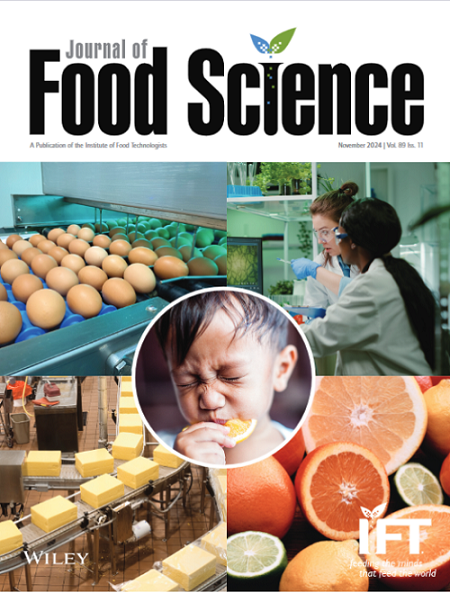Structures, antioxidant, and angiotensin I-converting enzyme (ACE)-inhibitory activities of peptides derived from protein hydrolysates of three phenolics-rich legume genera
Abstract
Lentil, black soybean, and black turtle bean are rich in phenolic antioxidants but belong to different scientific genera with different protein structures. This study's objective was to compare the characteristics of peptides derived from the protein hydrolysates of these legumes. Proteins were isolated, cooked, and subjected to in vitro digestion with pepsin, trypsin, and chymotrypsin. Hydrolyzed peptides were fractionated by ultrafiltration (UF), anion-exchange chromatography, and gel-permeation chromatography (GPC). GPC-eluted peptides of <3 kDa with high angiotensin I-converting enzyme (ACE)-inhibitory activities were sequenced. Antioxidant profiles of peptides from the three legumes analyzed by five methods did not follow the same activity patterns associated with the decreases in peptide's molecular size. Among the UF fractions, the <3 kDa fraction had the highest ACE-inhibition with approximately 45%, 42%, and 39% at 100 µg/mL. Stepwise purifications of the hydrolysates enhanced the ACE-inhibitory capacity (IC50) by two to nine folds after GPC to approximately 85, 64, and 93 µg/mL for lentil, black soybean, and black turtle bean, respectively. The 210 peptides sequenced in the <3 kDa fractions had chain-lengths, ranging from 6 to 18 amino acids with lentil having the shortest average length of 7.7 per peptide. Overall, based on chemical analyses, peptides contributed higher antioxidant capacity and ACE-inhibition than phenolics in legumes. Black turtle bean may need to be heated more prior to consumption to achieve the same digestibility as lentil and soy proteins. Results provided a foundation for making bioactive peptides from the three legumes.
Practical Application
Three antioxidant-rich legume genera, lentil, black soybean, and black turtle bean, produced different peptides with different angiotensin I-converting enzyme (ACE) potencies and different peptide lengths. The results provided a scientific basis for producing peptides from the selected genera for the development of functional foods or dietary supplement with high antioxidant, ACE inhibitory activities, and digestibility.

 求助内容:
求助内容: 应助结果提醒方式:
应助结果提醒方式:


